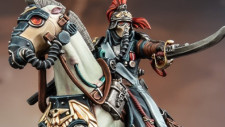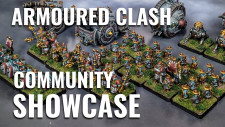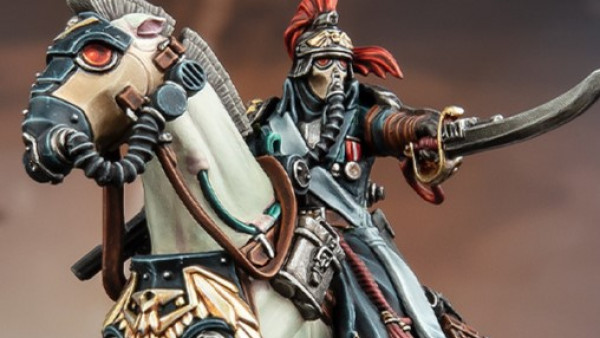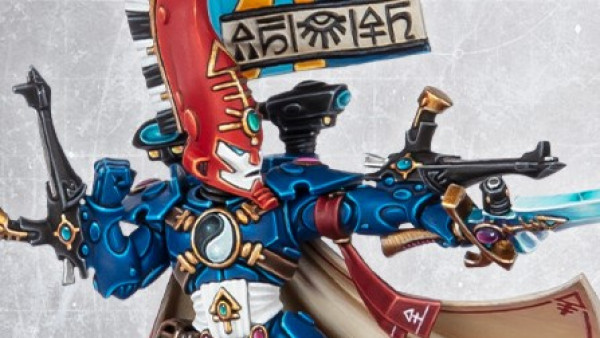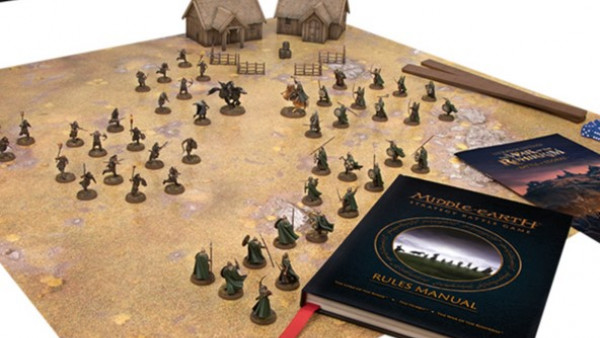Home › Forums › Historical Tabletop Game Discussions › Does the historical period dictate the minimum and/or maximum size of a battle ?
Related Games:
Tagged: rank&file, size, skirmish games
This topic contains 15 replies, has 7 voices, and was last updated by ![]() limburger 3 years, 9 months ago.
limburger 3 years, 9 months ago.
-
AuthorPosts
-
February 17, 2021 at 7:53 pm #1612542
To quote @oriskany from a discussion OTT Cog-sanctuaryDiscord channel after a revised edition of SPQR was mentioned :
“Still trying to come to grips with the idea of Roman “skirmish” battles.
Outside of gladiatorial games or street games like “Games of Rome” …
Skirmish isn’t really a Roman thing, especially in the date listed?”As a gamer I hadn’t really thought about it to be honest, but it is kind of weird when during that time the smallest possible unit is called a Century (80 men) and those rarely operate in anything less than a Cohort (480) with an understrength Legion at 5000+.
So this made me want to ask the question in the topic.
However first a definition/clarification of ‘skirmish’.
Yes it is possible to play a game with hundreds of 28mm scale minis and a playing area the size of a football field … but that’s not ‘skirmish’ size.
The size I refer to here is no more than 80 soldiers in an ‘army’ / ‘warband’ with elements of 8 or less and mobs of 40 as a (rare) maximum. In other words : you’re not even close to fielding a single Century …Back to the topic :
(1) Is this true for any(!) period during history ?
Would a game set during Napoleons’ antics be impossible as a realistic 28mm skirmish scale ?
Is the battle at the Hougoumont farm during Waterloo therefor impossible to play as a skirmish game ?(2) does the inverse statement also hold true ?
ie : are there periods in history where you don’t get to do big battles and the average fight is closer to ‘skirmish’ scale ?
I suspect modern special ops engagements fall into this category, although the enemy may have hundreds available …February 17, 2021 at 8:52 pm #1612551I am not a historical expert by any means but it would seem to me that the size of a battle is more likely to be determined by a number of factors, mobility being a big one. Low model count Skirmish games in historical periods are not strictly inaccurate but feel like they make less sense when you’re using heavily armoured Infantry. It’s entirely possible, even probable, that at most times in most if not all wars throughout history, that armies have sent out patrols and scouts and even raiding or forage parties and in heavily contested regions that these patrols would have inevitably encountered each other. Sometimes they may have avoided each other, probably more often than not in fact, but on occasion they would have fought and many of these small Skirmishes probably weren’t documented. However generally speaking even allowing for such engagements you would usually send lighter, mobile troops out on patrol, not your heavy foot sloggers. So I don’t think the period in history necessarily dictates the size of a battle but I think it definitely influences the types of troops you might see in different sizes of engagement.
February 17, 2021 at 8:57 pm #1612552I think you’ve eluded in part to some of the answer, and it is to do with the organisation and size of military units. If the unit size is 80 individuals, then having a skirmish game that requires a lower model count doesn’t quite track.
Having said that, you could easily come up with narrative reasons why there are smaller groups – stragglers from a column, a mustering area where the full body is yet to assemble, a picket line, a night time raid to silence the guns etc.
As you say, what defines a skirmish game is also important – is it a focus on individuals, a max head count, a size of game area?
February 17, 2021 at 9:07 pm #1612554Hougoumont is definitely not a Skirmishes game though; thousands of men were involved in the battle of Hougoumont.
February 17, 2021 at 11:38 pm #1612642@scribbs would that mean that skirmish games can work, provided the troop types are restricted based on the scenario ?
ie : no generic ‘kill everyone’ with heavy infantry and more than a few cavalry troops.
Instead something a bit more focussed on the scouting/patrol operations within the given period ?
February 18, 2021 at 5:45 am #1612756A whole thread boosted off something I said in Discord?
1) @limburger, you owe me royalties or I will sue for plagiarism.
2) I need to watch what I say!
Just kidding, great topic.
February 18, 2021 at 7:09 am #1612785@limburger Yes, I think skirmish games call out for scenario driven play. It could be a simple ‘destroy the enemy’, but only if there’s a thematic reason. I don’t think that wiping out the enemy should be the sole possible scenario for skirmish games, even if you have the warband style game with evolving characters.
Ideally, I’d love to have an overarching narrative campaign that puts the skirmish games into some context, with the option to have larger scale battles (played with a different system) that influence/are influenced by the skirmishes.
For example if you lose the bigger battle, your next game could be a skirmish whereby you are trying to get some stragglers to safety. If a skirmish is about driving away a picket line, maybe you get an advantage in deployment in the next battle.
February 18, 2021 at 7:20 am #1612786yeah … stop saying interesting things 😉
It probably helps connect the forums and discord if we do this more often.// —
I think the one thing that skirmish games rarely do is make you aware that you are part of a ‘bigger battle’.
There rarely is anything like “if we fail this objective the enemy gets extra reserves on round X” because the alarm got there in time. Although in theory the ‘game over’ in round X could represent that it just doesn’t feel like it.
It may not make much sense pre-WW1 because there is no way of reporting back to HQ in a way that could have additional troops in the next round, but as tech advances that sort of thing should be a potential bigger threat. And it’s not like you wouldn’t want to run away and call your general that you’ve just located a potential weak point, would you ?
You do get a (better) sense when playing some sort of campaign like we did during the FoW bootcamp. It was a bit silly when you consider the size of the operating area and the armies involved, but the concept was there.
Although that kind of applies to battles of all sizes as you can’t exactly play the entire campaign on a single map without needing years to resolve the entire conflict. Zooming in on specific battles makes things more interesting (and faster) to resolve.February 18, 2021 at 7:42 am #1612787For earlier periods I’d see it more as a case of using skirmishes as indicative of a number of small engagements that would set up conditions for the larger battles. So there might a skirmish around foraging, with the outcome resultsing in less troops/ troops with condition modifiers in the larger battle. A successful raid skirmish might mean that troop numbers are reduced to represent diverting resources to counter the raiders. Success in a scouting skirmish might give a player an opportunity to change terrain placement to represent picking the ground of their choosing.
Basically, some creative thought as to why a particular skirmish is being fought can be translated into an outcome for setting up a larger battle.
For modern settings the timeline for events can be be condensed to represent speed of communications/travel, so within days of a larger battle. For earlier periods the timescale stretches to weeks or months, and the skirmishes are more abstracted examples of ongoing operations.
February 18, 2021 at 9:23 am #1612821The century wasn’t quite the smallest possible organisational unit. Then factor in that more often than not units would be understrength anyway and operate in detachments in imperial frontier regions or during times of troubles. Particularly where there are fixed frontiers like in Germania small units will be patrolling on the rivers, manning observation towers, outlying forts etc..
So for the skirmish scale represented by Infamy, Infamy or SPQR or adapted Lion rampant there is plenty of rational to have these sized forces And that’s before you get standard scenarios like forces foraging for supplies, protecting a supply wagon or tax collector type narrative VIP – which work for near every era.
When you get smaller down to say 10-20 men e.g. Mortal Gods level you might have to narrow down options a little if you wanted to keep it as realistic as possible. The main issue I see is not so much that Roman skirmish is not historically feasible as such just that often troop types are incorporated that wouldn’t be available in such regions or operate in small detachment. Often the elite type units in army lists such aren’t appropriate for skirmish level gaming.
For Roman frontier warfare auxiliary units would predominate, but that doesn’t preclude legionaries operating there. When you start to field proportionally oversized detachments of ‘heavy’ Roman cavalry just because the units are in the list then that’s something different.
February 18, 2021 at 11:58 am #1612894I think its more governed by troop types…
Certain troop types wouldn’t be involved in raiding/skirmishes/recce yet they seem to crop up in historical skirmish games without worry…
Such as an ECW skirmish with pikemen. If they were doing such things, they would cut down the pike or just use their sword if they had one or a halberd if available.
Unut organisation size is less to do with it as soldiers are always capable of acting as the situation befits. If you want to send a party to forage, you dont have to base what you send on your smallest unit organisation size.
February 18, 2021 at 6:08 pm #1613089Sure … soldiers are able to act as the situation befits, but the more specialized units may not be as good at ‘regular’ soldiering as the ones that only ever use the same basic gear.
I wonder if it would be possible to design a system where you design an army list, but only get a ‘random’ selection of ‘volunteers’ to use in a skirmish sized battle.
The ‘random’ selection would have to take into account units not using their designated gear (so no pikes, but alternative equipment)
Anyways … while the answer to the first part of the topic appears to be more of a “no, but you can’t just field every troop” instead of a hard “nope” … we still don’t have an answer for the opposite.
ie : are there things that only ever exist as ‘small skirmishes’ or is everything always in service of a bigger operation ?
February 18, 2021 at 7:27 pm #1613137You need to define what you mean by a small skirmish.
I know of battles during the Williamite War in Ireland with 60 lads on one side…
February 18, 2021 at 8:01 pm #1613142@piers
“The size I refer to here is no more than 80 soldiers in an ‘army’ / ‘warband’ with elements of 8 or less and mobs of 40 as a (rare) maximum. In other words : you’re not even close to fielding a single Century …”It is hard to pin down a ‘minimum’ size, but I think something along those lines.
So a 60 lads at one side should be ok-ish, but it isn’t an exact science … at least I doubt anyone can ever agree on when something is a ‘skirmish’ in tabletop terms.February 18, 2021 at 8:20 pm #1613143I don’t think it’s that skirmishes were more or less likely in any time period, it’s that soldiers were trained to fight more for a particular type of warfare. For example, the Roman legionary was great in large battles between great blocks of troops. As a cohesive unit the century could dominate an equal or even greater number of opponents. What battles like the Teutoburg Forest massacre showed was when that cohesion was interrupted and the legionaries were forced to fight as individuals, that the training, the terrain and the man to man individualistic warfare gave the German tribes the advantage.
In the Dark Ages there are comparitively fewer large battles because the states required for massed combats don’t really exist, and forming a shieldwall becomes a big thing. The problem with shield walls is that they are very immobile. If you haven’t tried it (and any of us in law enforcement or the military will know,) getting even small groups of people to move together with riot shields takes practice, lots of practice. It’s common for novices to break up the formation just by being out of step with everyone else. Break up the cohesion and the shieldwall breaks and the combat becomes a skirmish. Without uniforms or heraldry it’s easy to imagine that killing a friendly in combat was a real possibilty.
By the age of gunpowder I think the big blocks of troops also compensated for the crappy accuracy of black powder weapons. They needed to throwout a wall of lead just to ensure they’d hit someone, thankfully the warfare of the day was to fght in large blocks of troops. I think this is why the Indian Wars in North America weren’t a slam duck for the Europeans. We would form firing blocks and they would encircle attacking from all sides and using terrain to break up the range advantage of firearms. Once the fighting changed to melee the club, sword, axe, knife and spear weilding native always held the advantage, whether Indians, Zulus, Maoris, Scots, etc.
-
AuthorPosts
You must be logged in to reply to this topic.





























